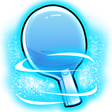Development Plan for Amateurs
Strategy
Ilia Minkin Asked 9 years ago
Hi Alois,
It seems that for an offensive player there are two ways to develop:
1) Concentrate on forehand topspin and turn it into an overwhelming strength
2) Work on both forehand and backhand
I feel like for a player on the pro track, practicing 6 times per week 4 hours a day with a coach and skillful training partners the second plan is a feasible one. But for an amateur the first one is more suitable: with a limited number of training hours it is much better to have an overwhelmingly strong side to rely on instead of two so-so sides. At the same time, developing two sides evenly is going to take forever keeping a player in endless mediocrity.
So what do you think, is it better for amateurs to sharpen the one-side game before seriously developing both sides?
 Alois Rosario Answered 9 years ago
Alois Rosario Answered 9 years ago
Hi Ilia,
I think overall it is better to develop both sides not only for attacking but for blocking and defending in general.
I think you have a good point with developing one finishing shot though. If you can develop your serves and a really strong forehand at the amateur level this will get you a long way.
It would be interesting to hear form there club level players as to what they think about this.
Recommended Video
Thoughts on this question
Become a free member to post a comment about this question.
Ilia Minkin Posted 9 years ago
Yeah, you're right that developing both sides for blocking is a must. My point was mostly about opening loop against backspin. From my experience, it takes a really, really long way to develop a reliable opening loop from one side. A shot that one can adapt to balls coming to different places and spins from different opponents. It is possible to learn to loop backspin from both sides in a practice setting, but the amount of practice it takes to make both sides work reliably in matches seems to be really huge.
Nicolas Matthew Posted 9 years ago
Needless to say, if you want to be a real deal looper, you either need one very good side with extremely good footwork just like Ryu Seung Min or take time to become a two-winged player. Blocking is a must though in both backhand and forehand. Both take a considerable amount of time, and take almost the same amount of time. But if you want to stay on the level "amateur" you are free to take your own decision. Hope this helps :)
Rory Goulding Posted 9 years ago
An overwhelming strength is paramount for becoming a strong player we must have something that our opponent 'fears'. My strength is, like many, my forehand loop.
But players that are at my level or slightly above will quickly learn this and put all their effort into trying to take away my FH aka pinning you down on your BH. I Have been developing my BH opening loop for a year and it's just starting to become reliable its funny because I hear my buddy's discussing my BH and how they should avoid it and now I'm starting to get more random balls to my FH, which is still my biggest weapon, and I then get outright winners or take over the point and usually win.
So I think you are correct, to a certain point. Once you have a weapon that is working, then in my opinion, you should start building up your weaknesses while continuing to make your big weapon stronger.
I am a club level player in Canada. I have noticed that most of our points are either outright errors due to a weakness that has been exploited.
Jean Balthazar Posted 9 years ago
Being "one sided" is probably a good option to reach a certain level quickly... when you're young. I know this is by far not the majority of players and Pingskillers, but when you're starting or re-starting to play after 40 or so, it is probably easier and more efficient to develop both sides topspins than running around your backhand all the time.
Ilia Minkin Posted 9 years ago
Alois, what are the most useful service and receive tactics for a player favoring their FH to make the first attack?
Hi Ilia,
I think it is the Pendulum serve so that you are already in a position to make a forehand on the next ball.
Receiving needs to be short so that again you get an attacking opportunity. If you play to their forehand half they are more likely to put the ball to your forehand side.
Ilia Minkin Posted 9 years ago
Receiving short is good option, but my problem is that it gives an angle to move me around. On my serve I can place the ball very wide to BH that limits the angle into my wide FH. Should I try to receive short into the same spot as well?
See what works best against each opponent. If you can get the ball short and low enough and force them to push long you can make enough time to get a forehand no matter where they place the ball.
Ilia Minkin Posted 9 years ago
That is a good point, thanks!